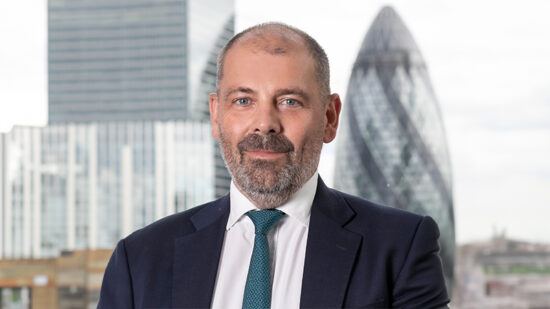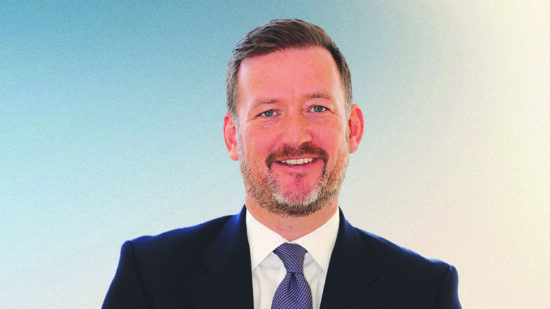Where are you based, and what is your job role?
I’m based in San Francisco – originally from Germany – and have been here since 1997. My role is on the Wells Fargo Asset Management side, and covers all sales and business development activities outside of North America. That includes Europe, the Middle East, Asia, Latin America, Australia and New Zealand.
I have a dedicated team of 15 sales directors across the different regions. We have established teams in London, Hong Kong and Tokyo, and a new Dubai team who joined us in January. Some parts of Latin America are run from San Francisco, but we also have dedicated people on the ground in the regions. On the sales side there’s also a client servicing team that does not report to me.
Tell me more about the new team in Dubai?
We have been covering the Middle East for a long time. It’s obviously a very important market for asset managers and it is dominated by some wealth funds that are important clients of ours. Previously we covered the region from Europe, but now we have taken a step up, you could say, but it’s not like we are new to the region.
Wells Fargo, as a company, already has a presence in the Dubai International Financial Centre, on the banking side. We utilise that presence, as we do in London.
Which jurisdictions are your funds registered in?
We started our Ucits fund business in 2008. Prior to that, we were doing separate account and advisory business, which we continue to do. In the Middle East we have several wealth funds.
We are active in both areas but when it comes to the Ucits funds, they are registered in the UK, Austria, Finland, France, Germany, Ireland, Italy, Luxembourg, Netherlands, Norway, Spain, Sweden and Switzerland. We are also in Hong Kong and Singapore.
We can sell on a private placement basis sometimes in countries where the funds are not registered – we have private placement sales in Thailand, for example – but, for the most part, the countries where they are registered are clearly our target markets.
In Asia, we are relatively new compared to Europe, where we started in 2008. The Asia sales are something we have emphasised for the past year and a half. If you look at our assets and where they have predominantly come from, the vast majority of money is still through Europe. Little by little it’s changing and Asia is moving into focus.
You have recently started selling funds in Sweden. How is that going?
Scandinavia is a very sophisticated market, which is reflected in the strategies we provide to the market there. Our product line-up has been in demand over the past few years and that is due to how well Wells Fargo conducts business with its autonomous investment teams and the strategies we have.
The Wells Fargo brand and the Wells Fargo heritage, of course, is US-focused in relation to quite a number of its products. It’s not all we do, but we have a lot of strong equity products and they have been in high demand and brought us into Sweden. We have institutional clients who want to do business with us because we have good products on offer.
Where do you do most of your business in Europe?
Switzerland is probably the most important when it comes to the volume of business generated there. If you look at our target client group, there is a broad range, from institutional clients to platforms, private banks, high-net-worth managers, financial intermediaries and so on.
A lot of these clients are in Switzerland, then followed by the UK. France is also an important market for us, and so is Scandinavia, where we have 11 funds available online at bank Nordnet.
You use both the iFAST and PhillipCapital platforms to sell in Asia. Can you tell me more about your platform strategy?
Our mission is to give clients access to our products. I think a platform plays an important role as a facilitator because how else can clients in the region buy the product? The platform plays a critical role and that is true everywhere, including in Asia.
You have reached five-year track records with some funds now, which presumably gives you a key launchpad into new markets?
Absolutely. We are not just another asset manager that has come to Europe with additional funds. We have a good story to tell and we have products that investors appreciate because we have, as you mentioned, good track records.
We have been very deliberate in the choice of products we brought to market. It was what investors were looking for. I think they appreciated quality, as expressed in our track record, but also our business model, with our autonomous investment teams and how we have developed the asset management business overall.
We have won numerous awards with our funds in Europe and elsewhere, so that helped. We also have the recognition of Wells Fargo as a stable financial institution.
Can you name an individual fund of yours that has done particularly well in the different markets so far?
The US All-Cap Growth Fund has been the one that has won a number of awards. Unfortunately, it soft-closed about a year ago, so it is only open to existing clients.
It has continued to attract quite strong flows from the existing investor base. The good news is that the reason for the soft close is that it is an all-cap fund and an all-cap fund has a small-cap component in it. That is where the capacity constraints come from.
The US Premier Growth Fund is available, which is managed by the same investment team, with the same investment philosophy, with a very high overlap in stocks. It’s got large and mid-caps, but not the small-caps.
It’s now approaching $100m and that is good news because the biggest obstacle, certainly from my perspective or anybody that comes to market with new funds, is always size. If I didn’t have that size issue, we probably would have sold a lot more.
In my experience, once a fund reaches $100m, the future growth is much easier than before that.
The US Premier Growth Fund doesn’t have Asia registration. Are there plans for that?
We are gradually expanding the registrations into the Asian market. It takes time to register funds in certain jurisdictions in Asia. That’s not our problem, it’s a general problem of the industry and the regulatory environment. Our strategy has always been to gradually increase the number of funds we offer to clients across the board. So the answer is yes.
How are regulations impacting on your business plans as you move into different markets?
We are from the US, which is a highly regulated market. The good news is we are used to dealing with a sophisticated regulatory environment. I don’t think it’s a problem per se, but when you develop business plans, it’s an expensive and timely issue.
If you look back to 2008, we started with three funds and now we have 13. We have increased the number of jurisdictions we are registered in, often driven by client demand. We have also increased the number of share classes that we offer with different currencies.
How is your product strategy in 2014 shaping up in terms of big investment themes?
If you look at the product line-up in Europe, we started late but we’re growing gradually. We have always tried to have a good mix between fixed income strategies and equity strategies, and on the equity side, a balance between the different categories.
The market associates us, rightly so, as very capable when it comes to US fixed income and US equities. So a number of the funds we offer are in those sectors.
We have a Morningstar five-star rated China Equity Fund, in Ucits form, a variety of emerging markets strategies, global equity, global bond and commodities strategies.
That range of strategies makes us well positioned for 2014 and beyond. I’m not speaking as an economist but from a practical perspective.
We have seen a strong interest in US equities in particular. I think we will continue to see that because the US economy is making a gradual recovery.
If you look at emerging market equities they obviously haven’t performed so well, particularly over the past year or so. If you look at the valuations and economic growth globally, where the strong growth’s coming from and at prices and valuations, it certainly makes a very strong case for emerging markets to bounce back at some point and close the gap.
We feel we are very well positioned in the developed markets too, from Japan to Europe to the United States.
Our goal is to give access to our quality investment products, which have proven to perform well over the market cycle, and that’s what we will continue to do.








